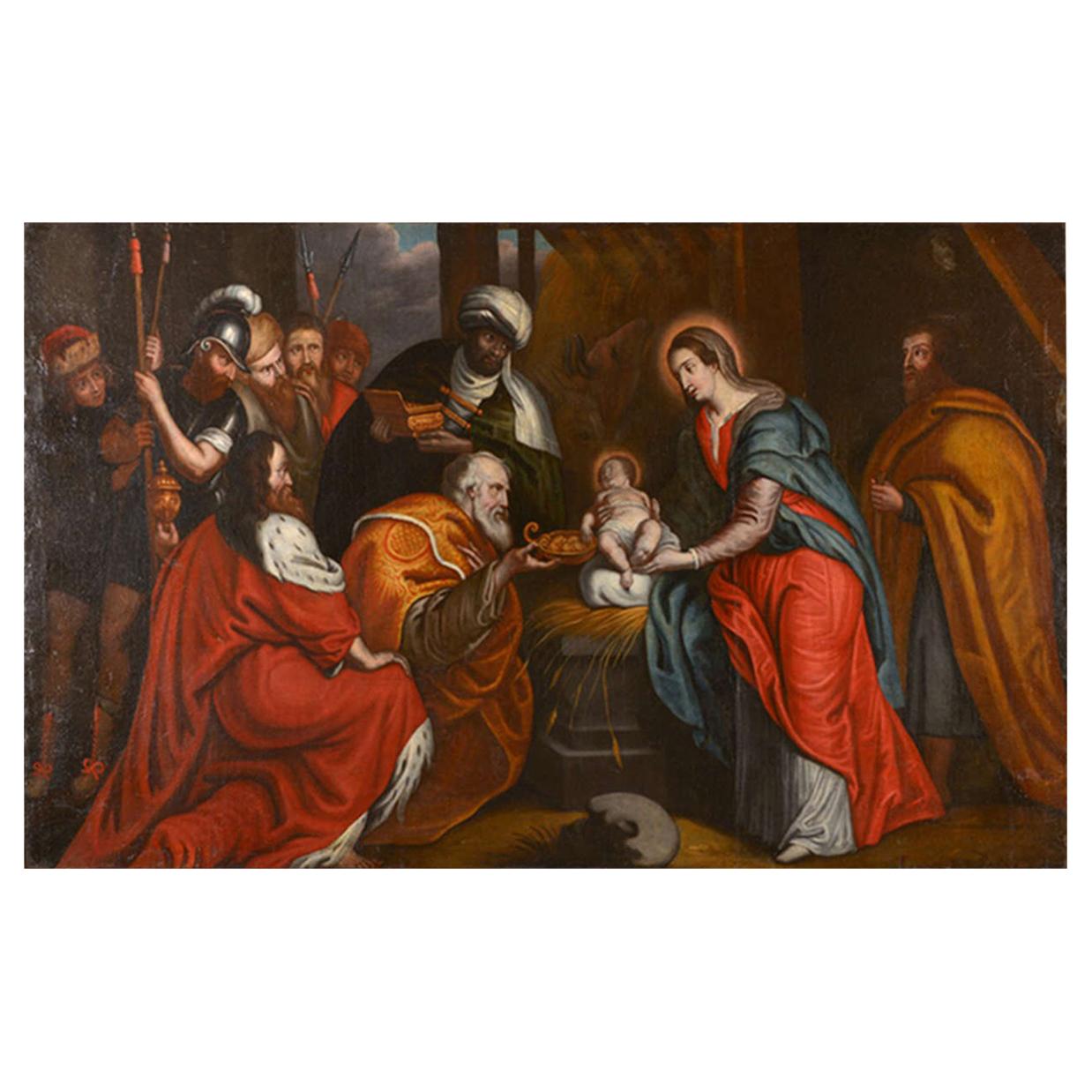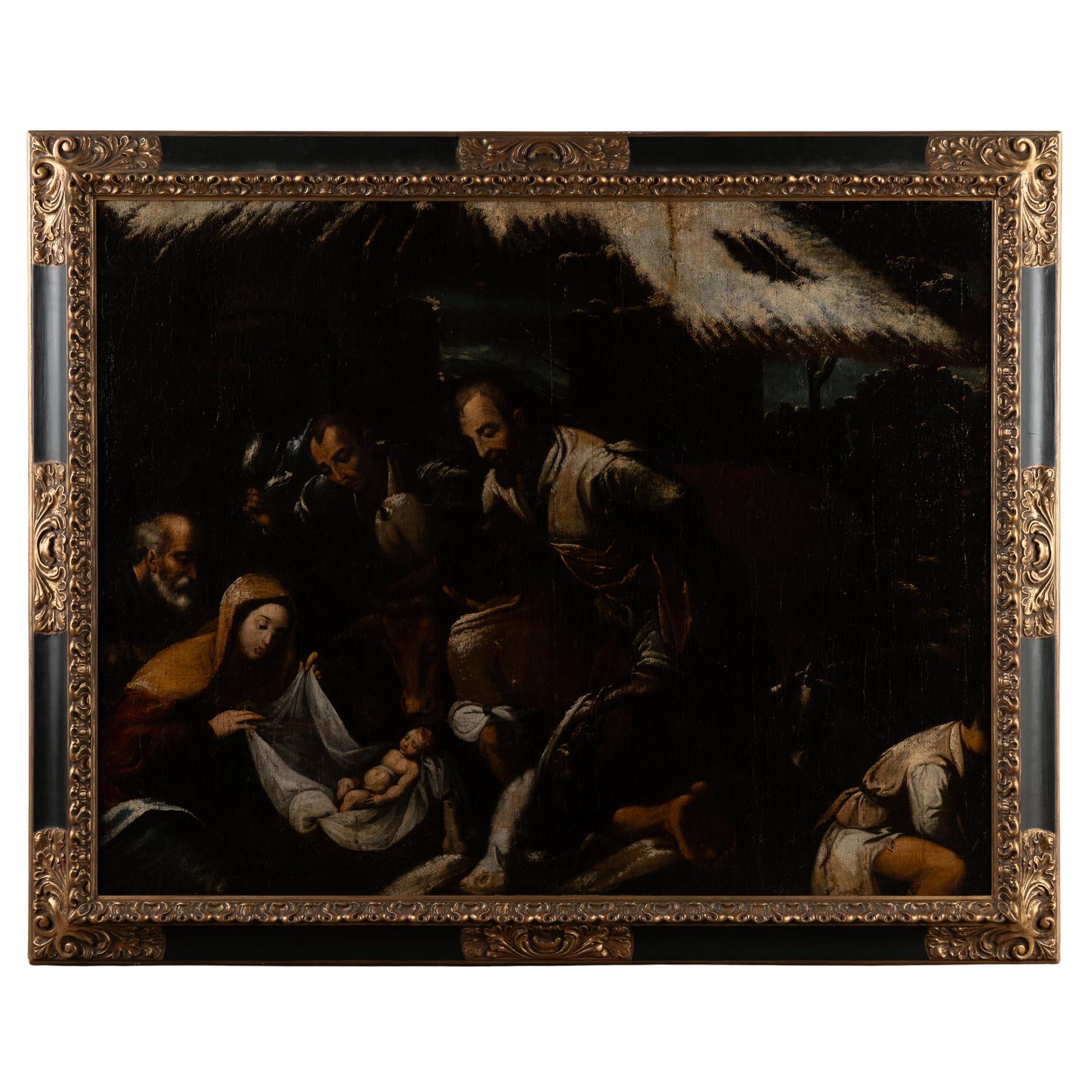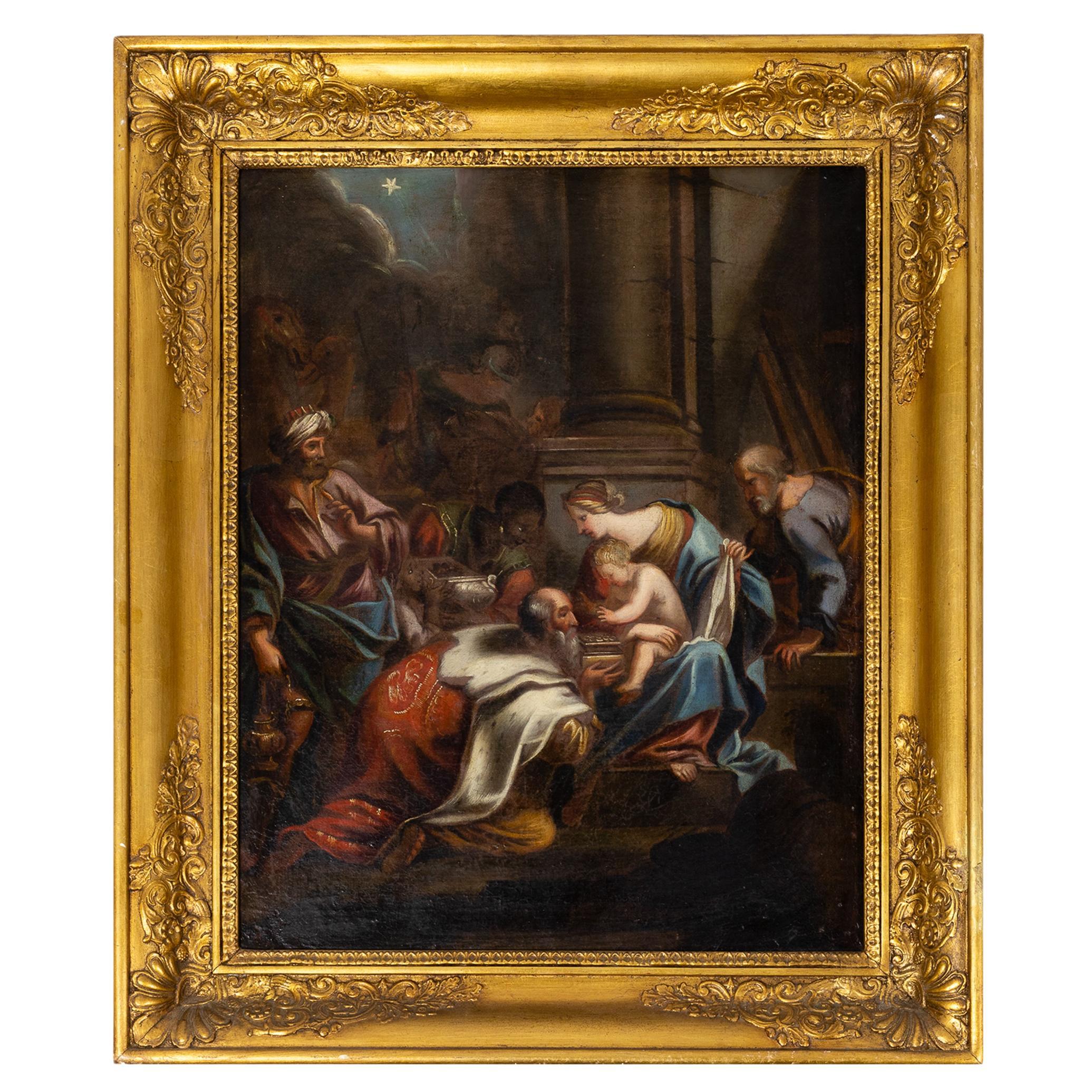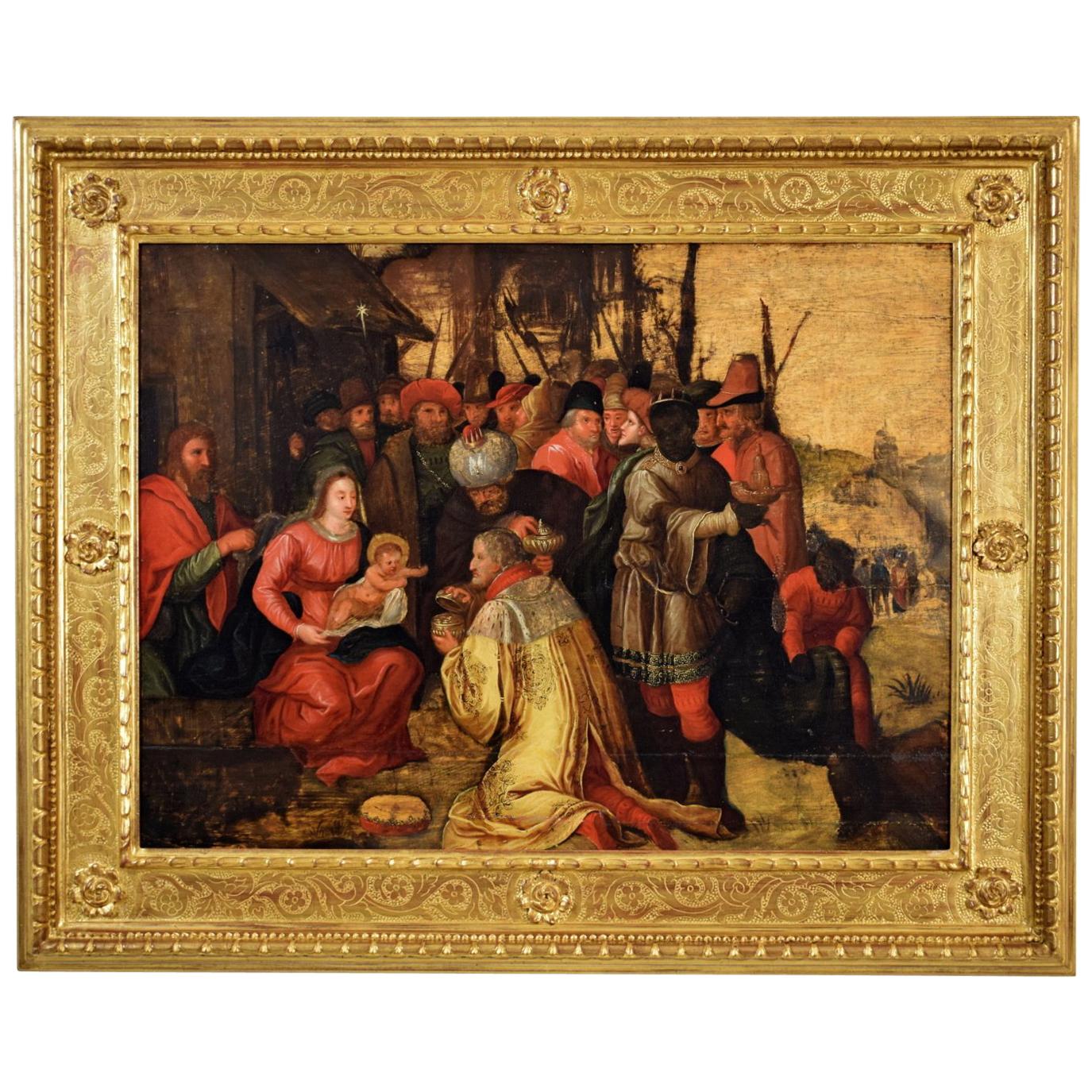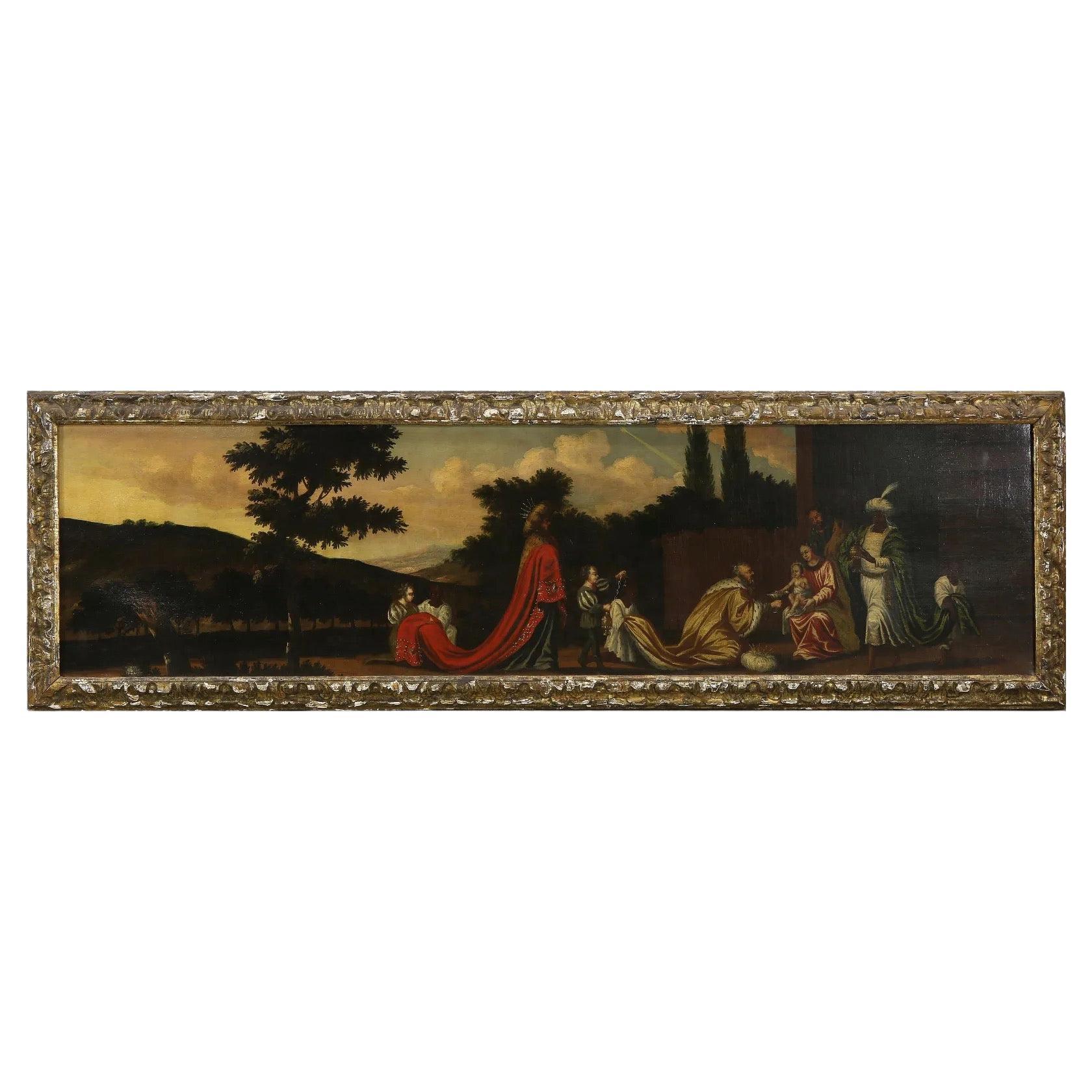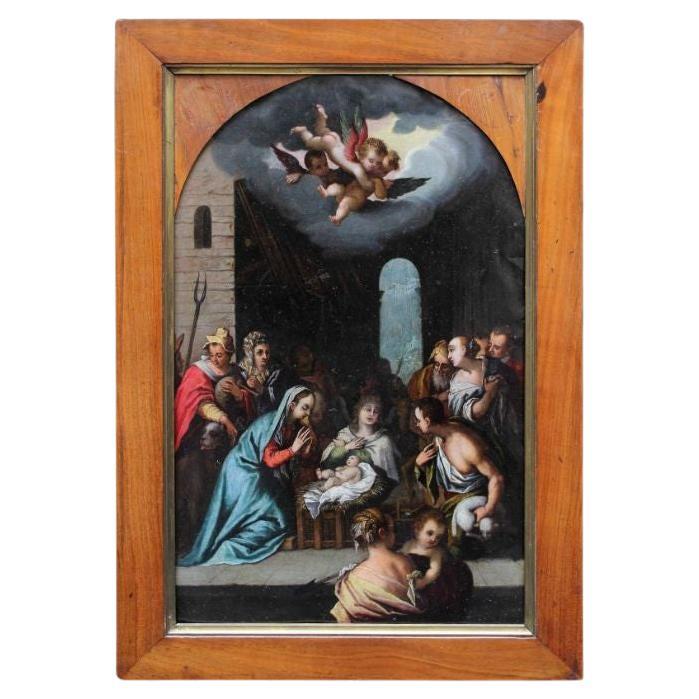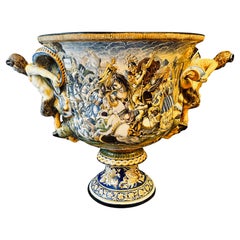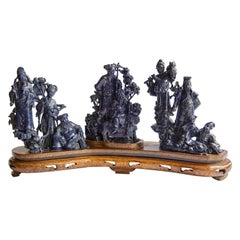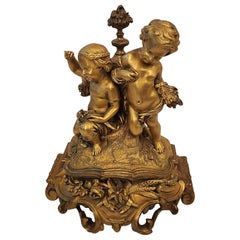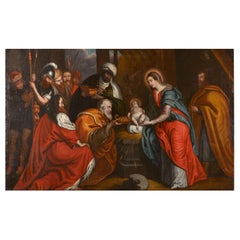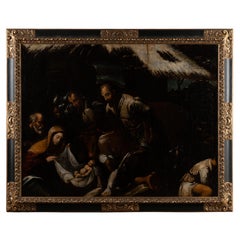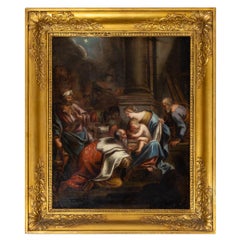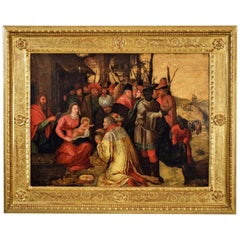Items Similar to Adoration of the Magi, Catalan Baroque, S.XVI Dated 1527, Oil on Wood
Want more images or videos?
Request additional images or videos from the seller
1 of 20
Adoration of the Magi, Catalan Baroque, S.XVI Dated 1527, Oil on Wood
$28,000
$35,00020% Off
£21,261.06
£26,576.3320% Off
€24,313.61
€30,392.0220% Off
CA$39,120.06
CA$48,900.0820% Off
A$43,510.05
A$54,387.5620% Off
CHF 22,719.59
CHF 28,399.4920% Off
MX$529,470.98
MX$661,838.7320% Off
NOK 290,163.89
NOK 362,704.8620% Off
SEK 272,122.54
SEK 340,153.1720% Off
DKK 181,461.81
DKK 226,827.2720% Off
Shipping
Retrieving quote...The 1stDibs Promise:
Authenticity Guarantee,
Money-Back Guarantee,
24-Hour Cancellation
About the Item
Catalan Baroque S.XVI
The Adoration of the Magi
Oil on wood
92cm x 68cm
Dated 1527
At the beginning of the Renaissance period, Gothic forms coexisted in Catalonia with other new solutions, in which religious fervor was mixed with the attention to detail of everyday life.
Following the medieval tradition, the altarpieces are thought from a narrative vision, and flat painting predominates in them. The bright colors and the use of light make this work representative of the Renaissance and Catalan Baroque. In informal conversations, Prof. Doctor Alberto Velasco from the University of Lleida has highlighted these very determining characteristics of this pictorial period that are so clearly seen in our work.
Origin:
This work is the main part of an altarpiece that originally belonged to the collection of Antonio Goytisolo Digat and Catalina Taltavull Victory.
Mr. Goytisolo Digat made his fortune in Cuba with the sale of sugar cane and slaves, just like the Taltavull family.
In the second half of the 19th century they established their residence in Barcelona at 142 Pau Clarins street where this piece was part of the furniture. Its leaves were auctioned to pay for the trip of Dr. Joaquin Goytisolo Taltavull to Argentina in 1917.
- Dimensions:Height: 36.23 in (92 cm)Width: 26.78 in (68 cm)Depth: 1.19 in (3 cm)
- Style:Baroque (Of the Period)
- Materials and Techniques:
- Place of Origin:
- Period:
- Date of Manufacture:1527
- Condition:Repaired: It has an old repair on the back due to the age and the transfer of the painting over the centuries. Refinished. Wear consistent with age and use.
- Seller Location:CABA, AR
- Reference Number:1stDibs: LU5634233928492
About the Seller
5.0
Vetted Professional Seller
Every seller passes strict standards for authenticity and reliability
Established in 1990
1stDibs seller since 2021
15 sales on 1stDibs
Typical response time: 1 hour
- ShippingRetrieving quote...Shipping from: CABA, Argentina
- Return Policy
Authenticity Guarantee
In the unlikely event there’s an issue with an item’s authenticity, contact us within 1 year for a full refund. DetailsMoney-Back Guarantee
If your item is not as described, is damaged in transit, or does not arrive, contact us within 7 days for a full refund. Details24-Hour Cancellation
You have a 24-hour grace period in which to reconsider your purchase, with no questions asked.Vetted Professional Sellers
Our world-class sellers must adhere to strict standards for service and quality, maintaining the integrity of our listings.Price-Match Guarantee
If you find that a seller listed the same item for a lower price elsewhere, we’ll match it.Trusted Global Delivery
Our best-in-class carrier network provides specialized shipping options worldwide, including custom delivery.More From This Seller
View AllAntique Ceramics from the Giustiniani Family Collection by Angelo
Located in CABA, AR
The Giustiniani family was one of the most important in ceramic production in Naples, particularly from the 17th to the 19th century. The Giustiniani manufactory is famous for its "r...
Category
Antique Late 19th Century Italian Ceramics
Materials
Ceramic, Maiolica
18th Century Five-Panel Chinese Coromandel Screel
Located in CABA, AR
Transport yourself back to the opulent splendor of the 18th century with this magnificent Chinese five-panel black Coromandel screen, a true m...
Category
Antique 18th Century Chinese Chinese Export Paintings and Screens
Materials
Gold Leaf
$10,500 Sale Price
30% Off
Chinese Lapislazuli Carving of "The Eight Daoist Inmortals", Mid 20th Century
Located in CABA, AR
Immerse yourself in the mystical world of Chinese mythology with this captivating mid-20th-century Lapis Lazuli carving depicting "The Eight Daoist Immortals." Each figure, intricate...
Category
Mid-20th Century Chinese More Asian Art, Objects and Furniture
Materials
Lapis Lazuli
$5,600 Sale Price
20% Off
19th Century Henri Picard Children Gilt Bronze Sculpture
By Henri Picard
Located in CABA, AR
Henri Picard, a master of artistic metalwork during the opulent Second Empire period in France, remains a figure of enduring fascination and admiration in the realms of antique art a...
Category
Antique Late 19th Century French Napoleon III Figurative Sculptures
Materials
Bronze
$2,400 Sale Price
65% Off
A Large Italian Maiolica Charger, 19th Century
Located in CABA, AR
Maiolica chargers are large, decorative ceramic plates that are part of the broader tradition of Maiolica pottery, a type of tin-glazed earthenware produced in Italy since the Renais...
Category
Antique 19th Century Italian Renaissance Revival Ceramics
Materials
Ceramic
$4,800 Sale Price
20% Off
Early 19th Century Venetian Gilt Wood Wall Mirror
Located in CABA, AR
Indulge in the timeless allure of Venetian craftsmanship with this magnificent antique Venetian mirror. Crafted from gilt wood with a striking baroque influence, it exudes opulence a...
Category
Antique Early 19th Century Baroque Wall Mirrors
Materials
Mirror, Wood
$2,400 Sale Price
20% Off
You May Also Like
Flemish 17th Century Oil on Canvas Painting of the Adoration of the Magi
Located in Houston, TX
Beautiful Flemish 17th century oil on canvas painting depicting the adoration of the magi. Vivid color and wonderful quality of pa...
Category
Antique 17th Century Dutch Paintings
Materials
Canvas
17th Century Original Oil on Canvas Painting of The Adoration of the Magi, Spain
Located in Round Top, TX
Original oil on canvas painting of the adoration of the magi, with Mother Mary and infant Christ.
Framed over 5' wide x 4' tall, no signature/unknown artist.
Canvas has craquelure, o...
Category
Antique Early 17th Century Spanish Paintings
Materials
Canvas, Wood, Paint
Adoration of the Magi Paiting, Italian Baroque Religious Art, 18th Century
Located in Lisbon, PT
This 18th century Italian painting captures one of the most iconic biblical moments: the Adoration of the Magi.
The mysterious travelers kneel in reverence before the Infant Jesus, ...
Category
Antique 18th Century Italian Baroque Paintings
Materials
Canvas
$9,476 Sale Price
20% Off
Frans Franken III 16th Century Oil on Wood, Adoration of the Magi, Painting
By Frans Franken the Younger
Located in IT
Frans Franken III and aid, Adoration of the Magi
Good condition
The oil painting on wood, with a gold background, depicts an Adoration of the Magi. The Magi are dressed in sumptuous silk and brocade dresses; they wear precious hats and jewelery. The richness of their garments is in contrast with the humility of the Holy Family and of the other characters who, around curious, observe the scene. The hut is simple, made of wood and straw: above it shines the Comet, symbol of the divine event. In the distance, a group of wayfarers walk along a path that is lost on the horizon, blending into the gold of the bottom.
The representation proposes a traditional iconography, in which the painter inserts some details that he lends himself to symbolic interpretations. Among these is the appearance of the Magi, who from the XIVth century differs iconographically: the wise astronomers represent the homage to Jesus of the then known parts of the world, namely Africa, Asia and Europe. To the right of the Magi, in the foreground, sits a monkey, considered a demonic creature and a symbol of lies and sin. It is depicted on the sidelines, as a defeat, next to a fragment of a classical column: ruin alludes to the end of paganism, of the old world that collapses with the advent of the new one, marked by the birth of Christ and liberation from the Original Sin. On the ruins he climbs the ivy, symbol of the immortality of the soul. The work is attributable to the workshop of the Flemish painter Frans Francken III...
Category
Antique 16th Century Belgian Renaissance Paintings
Materials
Paint
17th Century Italian Flemish Oil on Canvas Painting of Adoration of the Magi
Located in North Miami, FL
17th Century Italian Flemish oil on canvas painting depicting the Adoration of the Magi. Early Flemish painting was contemporary to the development of the early Renaissance in Italy. In the middle of the 15th century Italy...
Category
Antique 17th Century Italian Baroque Paintings
Materials
Wood, Giltwood, Paint
$26,663 Sale Price
24% Off
16th Century Adoration of the Shepherds Painting Oil on Copper by Carnevale
By Carnevale Studio
Located in Milan, IT
Domenico Carnevale (Sassuolo, 1524 - Modena, 1579) Adoration of the Shepherds
Oil on copper, 42 x 28 cm
Frame 54 x 36 cm
Expert opinion of Prof. Emilio Negro
The painting represents the Adoration of the Shepherds, the Child in the center, next to the Madonna kneeling in prayer and an angel behind her; towards him in the foreground a woman with a child in her arms, a shepherd with a sheep on the right, a bagpiper on the left and various other male and female characters turn to him. The architectures of the background, between which a glimpse of the landscape can be glimpsed, are hidden in the upper part by the clouds, where a "celestial glory" encamps with three flying angels.
The painting shows mannerist characters that can be traced back to the second half of the sixteenth century, and can be traced back to an author from the Modena area, with stylistic references to the Bolognese Samacchini (1532 - 1577) and Passerotti (1529 - 1592). More precisely, it can be attributed to Domenico Carnevale (1524-1579), one of the most important masters of the sixteenth century active in the local area. The Carnival was formed in Emilia, his homeland, where he worked for many years. However, his works also show a clear Roman influence, dictated by a long experience in the city, during which he also dedicated himself to the restoration of the Sistine Chapel. Trained in the late-mannerist environment of Modena, he is also linked to the Parmesan Corrorese and Ferrarese Dossesque tradition; Carnival also always maintains a slight archaic sentiment in his work,
The main stylistic reference must be identified in a work similar in subject and iconographic setting, coming from the church of the Pio Istituto Orfanelle di San Geminiano di Modena, currently part of the Art Collection of the Province, attributed to the same influence as the Carnival. Another interesting comparison should be identified with A Presentation of Jesus in the Temple...
Category
Antique 16th Century Italian Paintings
Materials
Copper
